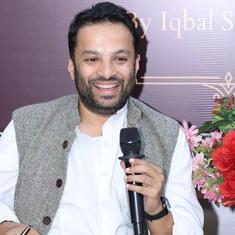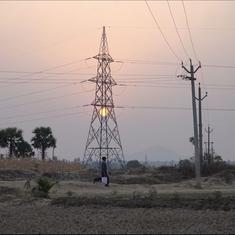Welcome to The India Fix by Shoaib Daniyal, a newsletter on Indian politics. To get it in your inbox every Monday, sign up here. Have feedback, interesting links or memes? Send them to shoaib@scroll.in.
In the early hours of February 19, a young man, Anish Khan was allegedly thrown off the roof of his own house by police personnel. Twenty eight-year-old Khan was a student of journalism and mass communication and lived in Amta, an hour west of Kolkata. He was also an active participant in student politics in the state, identifying with the Communist Party of India (Marxist) as well as the newly launched Indian Secular Front, a minor party representing mostly rural Bengali Muslims.
Khan had also participated in the protests against the Citizenship Amendment Act that rocked India in 2020.
Political and police violence is, unfortunately, a common occurrence in West Bengal. However, Khan’s murder seems to be an inflection point. Possibly for the first time under the Trinamool Congress regime, a political murder has prompted citizens to hit the streets in significant numbers to demand justice for Khan’s family.
On Tuesday, protestors from the Left and the Indian Secular Front threw Kolkata city out gear, blocking major junctions and roads. Amta itself has witnessed continuous protests. It even saw clashes between police and protesters.

The intensity of the protests underlines the state of flux in which Bengal politics now finds itself only a year after the Trinamool crushed the Bharatiya Janata Party in the Assembly elections. In particular, it highlights the confusion rising among the state’s Muslims: while the community backed Mamata Banerjee to the hilt in the previous election, should they begin to think of options?
A short flashback: the politics of West Bengal has had many distasteful elements but vertical, communal vote banks have historically not been among them. This started to change around the end of the Left’s 34-year old reign in 2011, as Muslims started to shift to Mamata Banerjee. Banerjee pushed hard to woo the community, highlighting allegations of anti-Muslim bias in the police force, for example. Once in power, she announced a slew of Muslim-oriented policies such inducting backward-caste Muslims into the Other Backward Classes quota and even, controversially, a stipend for Muslim clerics.
Maybe most impactful, however, Muslims joined the Trinamool in large numbers in the ranks of local, rural leadership. This was a significant change from the Left, which had received large numbers of rural Bengali Muslim votes, but whose leadership was dominated by upper-caste Hindus.

By 2016, according to date from the Centre for the Study of Developing Societies, these efforts helped the Trinamool garner 51% of the Muslim vote.
This, in turn, was further turbocharged by the entry of the Bharatiya Janata Party into the state and its talk of conducting a citizenship verification exercise aimed exclusively at the state’s Muslims. By 2019, in the Lok Sabha elections, the proportion of the Muslim vote going to the Trinamool had gone up to 70%. In the 2021 Assembly elections the figure stood at an incredible 75%.
A rough estimation plugging in CSDS figures means that more than half of the Trinamool’s vote came from Muslims.
However, that was a year ago. Since then, conditions in the state have changed dramatically. The BJP has disappeared from large parts of the state. In fact, local body polls since the Assembly elections have seen the Left reemerge as the main opposition for now (even as the Trinamool remains a distant first place).
Moreover, the BJP itself has not spoken of the National Register of Citizens for some time or even, for that matter, implemented the Citizenship Amendment Act – the two-stage “chronology” of what Union Home Minister Amit Shah had claimed would be the BJP’s approach to testing the citizenship of India’s Muslims.
Bengal, today.
— Soumyajit Majumder (@SoumyajitWrites) February 26, 2022
During Left's protest against death of activist Anish Khan who was pushed off from the third floor of his house allegedly by police pic.twitter.com/wfrhG4gdwB
As the Anish Khan case shows, without these conditions, the unusual strenght of the Trinamool’s Muslim vote bank might be fracturing. There are already signs of this in the recent local body elections, where Muslims in some areas have chosen Congress and Left candidates (although the true scale of the shift is difficult to gauge given large-scale accusations of rigging).
A further push is provided by the Trinamool’s current focus on national politics. Although it wooed Muslim voters when it first came to power in Bengal, as it tries to enter the national arena, it risks allegations that it is now “appeasing” the minority community.
Since the Assembly elections, for example, Mamata Banerjee has kept mum on key issues such as public violence against Muslims or the hijab ban in Karnataka, further sparking Muslim discontent in the state. While the party has Muslim leaders at the local level, its high command in Kolkata does not reflect the large number of minority votes it receives.
The Trinamool’s current moment highlights the difficulties parties face in stitching together and keeping verticalised, communal votebanks. The BJP has, of course, tried this on a national scale, by creating a Hindu vote bank. While this has kept it in power nationally for two terms, its record in state elections is spotty: the party has lost a significant majority of contests since 2014.
While Modi’s BJP has certainly ended the era of coalitions, its Hindu-only vote bank struggles to achieve the electoral dominance the Congress enjoyed under Nehru and Indira Gandhi, when it was free to shop for the votes of a community.
While many have written about the fact that electoral democracy often incentivises communal politics, the flip side is that India’s incredible diversity might also mean that purely communal vote banks are difficult to sustain for extended periods.
The civilisational question
On Thursday, Russia launched an invasion of Ukraine. While war is catastrophic anywhere – there is one on Yemen right now – the location of the fighting, in Europe, made sure the conflict received massive media coverage.
So much so one journalists from a major US news channel inadvertently made it explicit why, employing colonial tropes of who is or is not “civilised”:
“This isn’t a place, with all due respect, like Iraq or Afghanistan that has seen conflict raging for decades. This is a relatively civilised, relatively European – I have to choose those words carefully, too – city where you wouldn’t expect that, or hope that it’s going to happen.”
“This is a relatively civilized” city, he says, referring to Kyiv, after saying it’s not like Iraq or Afghanistan. https://t.co/q6UEtwvzyZ
— Mehdi Hasan (@mehdirhasan) February 26, 2022
Old Zealand
Reminder to everyone outside of the Netherlands: "Old Zealand" is located in the Netherlands and is actually called Zeeland. Still a map without New Zealand… Source: https://t.co/RWLmphvfsi pic.twitter.com/79GRq9liFm
— Simon Kuestenmacher (@simongerman600) February 26, 2022
Google Maps doing its bit
"On the first day of the war, we saw invading Russian tank units unexpectedly being exposed by Google maps, because Google wanted to alert drivers that the Russian armor was causing traffic jams.”https://t.co/pwHV0pjgOL pic.twitter.com/hMhBRGAiqN
— Adam Tooze (@adam_tooze) February 26, 2022










